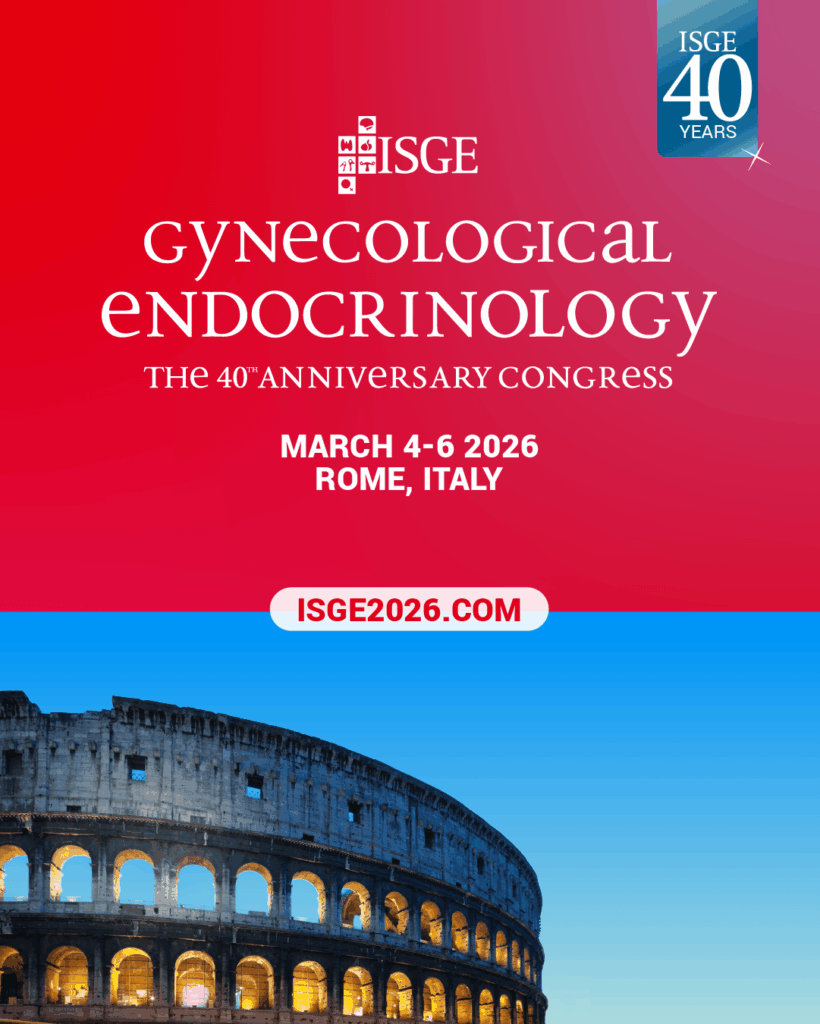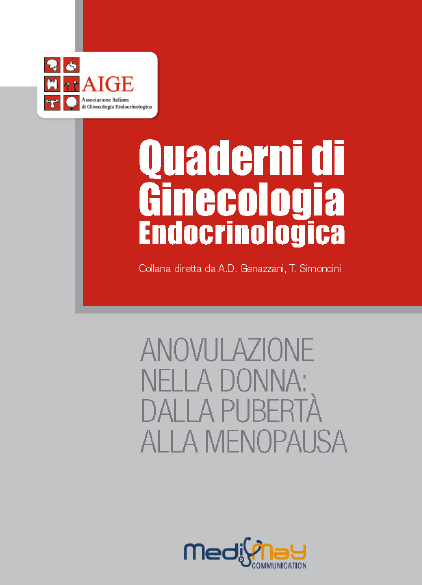-
Christian M. Becker, William T. Gattrell, Kerstin Gude, Sukhbir S. Singh
Reevaluating response and failure of medical treatment of endometriosis: a systematic review
Fertil Steril 2017;108:125–36.
Download
Abstract
Objective: To assess patient response rates to medical therapies used to treat endometriosis-associated pain.
Design: A systematic review with the use of Medline and Embase. Setting: Not applicable. Patient(s): Women receiving medical therapy to treat endometriosis.
Interventions(s): None. Main Outcome Measure(s): The proportions of patients who: experienced no reduction in endometriosis-associated pain symptoms; had pain symptoms remaining at the end of the treatment period; had pain recurrence after treatment cessation; experienced an increase or no change in disease score during the study; were satisfied with treatment; and discontinued therapy owing to adverse events or lack of efficacy. The change in pain symptom severity experienced during and after treatment, as measured on the visual analog scale, was also assessed.
Result(s): In total, 58 articles describing 125 treatment arms met the inclusion criteria. Data for the response of endometriosisassociated pain symptoms to treatment were presented in only 29 articles. The median proportions of women with no reduction in pain were 11%–19%; at the end of treatment, 5%–59% had pain remaining; and after follow-up, 17%–34% had experienced recurrence of pain symptoms after treatment cessation. After median study durations of 2–24 months, the median discontinuation rates due to adverse events or lack of efficacy were 5%–16%.
Conclusion(s): Few studies of medical therapies for endometriosis report outcomes that are relevant to patients, and many women gain only limited or intermittent benefit from treatment.
-
Rene Ecochard, Thomas Bouchard, Rene Leiva, Saman Abdulla, Olivier Dupuis, Olivia Duterque, Marie Garmier Billard, Hans Boehringer, Christophe Genolini
Characterization of hormonal profiles during the luteal phase in regularly menstruating women
Fertil Steril 2017;108: 175–182
Abstract
Objective: To characterize the variability of hormonal profiles during the luteal phase in normal cycles.
Design: Observational study.
Setting: Not applicable.
Patient(s): Ninety-nine women contributing 266 menstrual cycles.
Intervention(s): The women collected first morning urine samples that were analyzed for estrone-3-glucuronide, pregnanediol-3-alpha-glucuronide (PDG), FSH, and LH. The women had serum P tests (twice per cycle) and underwent ultrasonography to identify the day of ovulation.
Main Outcome Measure(s): The luteal phase was divided into three parts: the early luteal phase with increasing PDG (luteinization), the midluteal phase with PDG ≥10 μg/mg Cr (progestation), and the late luteal phase (luteolysis) when PDG fell below 10 μg/mg Cr.
Result(s): Long luteal phases begin with long luteinization processes. The early luteal phase is marked by low PDG and high LH levels. Long luteinization phases were correlated with low E1G and low PDG levels at day 3. The length of the early luteal phase is highly variable between cycles of the same woman. The duration and hormonal levels during the rest of the luteal phase were less correlated with other characteristics of the cycle.
Conclusion(s): The study showed the presence of a prolonged pituitary activity during the luteinization process, which seems to be modulated by an interaction between P and LH. This supports a luteal phase model with three distinct processes: the first is a modulated luteinization process, whereas the second and the third are relatively less modulated processes of progestation and luteolysis.
-
Nanette Santoro, Sybil L. Crawford, Samar R. El Khoudary, Amanda A. Allshouse, Sherri-Ann Burnett-Bowie, Joel Finkelstein, Carol Derby, Karen Matthews, Howard M. Kravitz, Sioban D. Harlow, Gail A. Greendale, Ellen B. Gold, Rasa Kazlauskaite, Dan McConnell, Genevieve Neal-Perry, Jelena Pavlovic, John Randolph, Gerson Weiss, Hsiang-Yu Chen, Bill Lasley
Menstrual Cycle Hormone Changes in Women Traversing Menopause: Study of Women’s Health Across the Nation
J Clin Endocrinol Metab (2017) 102 (7): 2218-2229.
Abstract
Context: Menstrual cycle hormone patterns in women approaching menopause are inadequately studied.
Objective: To describe day-to-day menstrual cycle hormones in women as they approach menopause from the Study of Women’s Health Across the Nation Daily Hormone Study (DHS).
Design: DHS enrollees collected daily urine for one entire menstrual cycle or up to 50 days, whichever came first, annually, up to the final menstrual period (FMP) or for up to 10 years.
Setting: Seven sites across the United States.
Participants: A total of 511 premenopausal or early perimenopausal women at enrollment, within 10 years before menopause.
Intervention: Time-to-FMP measurement.
Main Outcome Measures: Evidence of luteal activity (ELA), determined using objective algorithms. Menstrual cycle/segment length; whole cycle, and segment integrated urinary luteinizing hormone, follicle-stimulating hormone, estrone conjugates, and pregnanediol glucuronide (Pdg) for each year, organized around the FMP.
Results: Mean menstrual cycle length was remarkably preserved at 26 to 27 days in ELA cycles; non-ELA cycles had greater variability. The percentage of cycles that were ELA remained high until 5 years before the FMP (87.9%); only 22.8% of cycles within 1 year of the FMP were ELA. Whole cycle hormones remained relatively stable up to 3 years before the FMP, when gonadotropins began to increase. Pdg excretion declined slowly with progress to the FMP, but Pdg patterns of ELA cycles remained distinguishable from non-ELA.
Conclusions: Menstrual cycle hormone patterns in perimenopausal women resemble those of midreproductive-aged women until 5 years before menopause, and presumably ovulatory cycles retain a potentially fertile pattern up to the end of reproductive life
-
Xue Jiao, Huihui Zhang, Hanni Ke, Jiangtao Zhang, Lei Cheng, Yixun Liu, Yingying Qin, Zi-Jiang Chen
Premature Ovarian Insufficiency: Phenotypic Characterization Within Different Etiologies
J Clin Endocrinol Metab (2017) 102 (7): 2281-2290. Download
Abstract
Context: Premature ovarian insufficiency (POI) is highly heterogeneous, both in phenotype and etiology. They are not yet clearly stated and correlated.
Objective: To characterize clinical presentations of a large, well-phenotyped cohort of women with POI, and correlate phenotypes with etiologies to draw a comprehensive clinical picture of POI.
Design, Patients, Interventions, and Main Outcome Measures: In this retrospective study, a total of 955 Chinese women with overt POI between 2006 and 2015 were systemically evaluated and analyzed. The phenotypic features, including menstrual characteristics, hormone profiles, ovarian ultrasonography/biopsy, pregnancy/family history, and genetic/autoimmune/iatrogenic etiologies were assessed and further compared within different subgroups.
Results: Among 955 women with POI, 85.97% presented with secondary amenorrhea (SA) and 14.03% with primary amenorrhea (PA). PA represented the most severe ovarian dysfunction and more chromosomal aberrations than SA. The decline of ovarian function in patients with SA progressed quickly. They had shortened reproductive periods (approximately 10 years) and developed amenorrhea within 1 to 2 years after menstrual irregularity. The ovaries were invisible or small, and the presence of follicles (28.43%) was correlated with other good reproductive indicators. Familial patients (12.25%) manifested better ovarian status and fewer chromosomal aberrations than sporadic patients. The etiologies consisted of genetic (13.15%), autoimmune (12.04%), and iatrogenic (7.29%), approximately 68% remaining idiopathic. There were significant differences among different etiologies, with the genetic group representing the most severe phenotype.
Conclusion: Our results regarding distinct phenotypic characteristics and association with different etiologies further confirmed the high heterogeneity of POI. Additional longitudinal clinical studies and pathogenesis research are warranted.
-
Ana Maria Sanchez, Valeria Stella Vanni, Ludovica Bartiromo, Enrico Papaleo, Eran Zilberberg, Massimo Candiani, Raoul Orvieto, Paola Viganò
Is the oocyte quality affected by endometriosis? A review of the literatureJournal of Ovarian Research (2017) 10:43
Download
Endometriosis is an estrogen-dependent chronic inflammatory condition that affects women in their reproductive period causing infertility and pelvic pain. The disease, especially at the ovarian site has been shown to have a detrimental impact on ovarian physiology. Indeed, sonographic and histologic data tend to support the idea that ovarian follicles of endometriosis patients are decreased in number and more atretic. Moreover, the local intrafollicular environment of patients affected is characterized by alterations of the granulosa cell compartment including reduced P450 aromatase expression and increased intracellular reactive oxygen species generation. However, no comprehensive evaluation of the literature addressing the effect of endometriosis on oocyte quality from both a clinical and a biological perspective has so far been conducted. Based on this systematic review of the literature, oocytes retrieved from women affected by endometriosis are more likely to fail in vitro maturation and to show altered morphology and lower cytoplasmic mitochondrial content compared to women with other causes of infertility. Results from meta-analyses addressing IVF outcomes in women affected would indicate that a reduction in the number of mature oocytes retrieved is associated with endometriosis while a reduction in fertilization rates is more likely to be associated with minimal/mild rather than with moderate/severe disease. However, evidence in this field is still far to be conclusive, especially with regards to the effects of different stages of the disease and to the impact of patients’ previous medical/surgical treatment(s).
-
Eser Sefik Ozyurek, Tevfik Yoldemir, Gokhan Artar
Androstenedione response to recombinant human FSH is the most valid predictor of the number of selected follicles in polycystic ovarian syndrome: (a case-control study)Journal of Ovarian Research (2017) 10:34
Download
Abstract
Background: We aimed to test the hypothesis that the correlation of the changes in the blood Androstenedione (A4) levels to the number of selected follicles during ovulation induction with low-dose recombinant human follicle stimulating hormone (rhFSH) is as strong as the correlation to changes in the blood Estradiol (E2) levels in polycystic ovary syndrome (PCOS).
Methods: Prospective Case-control study conducted from October 2014 to January 2016. 61 non-PCOS control (Group I) and 46 PCOS (Group II) patients treated with the chronic low-dose step up protocosl with rhFSH. A4, E2, progesterone blood levels and follicular growth were monitored.. Univariate and hierarchical multivariable analysis were performed for age, BMI, HOMA-IR, A4 and E2 (with the number of selected follicles as the dependent variable in both groups). ROC analysis was performed to define threshold values for the significant determinants of the number of selected follicles to predict cyle cancellations due to excessive ovarian response.
Results: The control group (Group I) was comprised of 61 cycles from a group of primary infertile non-PCOS patients, and the study group (Group II) of 46 cycles of PCOS patients. The analysis revealed that the strongest independent predictor of the total number of selected follicles in Group I was the E2(AUC) (B = 0.0006[0.0003-0.001]; P < 0.001); whereas for Group II, it was the A4 (AUC) (B = 0.114[0.04-0.25]; P = 0.01). Optimum thresholds for the A4 related parameters were defined to predict excessive response within Group II were 88.7%, 3.1 ng/mL and 5.4 ng*days for the percentage increase in A4, the maximum A4 value and area under the curve values for A4, respectively.
Conclusion: A4 response to low-dose rhFSH in PCOS has a stronger association with the number of follicles selected than the E2 reponse. A4 response preceding the E2 response is essential for progressive follicle development. Monitoring A4 rather than E2 may be more preemptive to define the initial ovarian response and accurate titration of the rhFSH doses.






